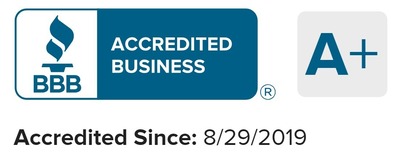As a landlord, you must have faced problems like falling short of renters in the fall and winter or during off-seasons, right? If not, that’s wonderful, but there might be times when you need to face such an issue. There was once a time when I also went through with such an issue. So, I can understand your stress.
You know, attracting tenants during the fall and winter months is quite challenging. But with the right strategies, you can effectively fill vacancies or reduce the vacancy rate during fall and winter, too. In this article, I am gonna share several actionable tips backed by data and trends to help you attract tenants during these colder months.
So, let’s get started.
Highlight Energy Efficiency
The cold months mean tenants gonna worry about the heating costs as temperatures drop. Thus, you just have to highlight energy-efficient features in your property, such as:
- Quality of Insulation: Make sure your property is well-insulated to help prevent heat loss.
- Energy-Efficient Appliances: Display your Energy Star-rated appliances, which help to cut utility bills and are visually appealing.
- Smart Thermostats: If your property has a smart thermostat, mention how it can help tenants control their heating costs.
According to the U.S. Department of Energy, energy-efficient homes can save tenants up to 30% on heating costs.
Offer Flexible Leasing Terms
As I have already mentioned, fall and winter are often slower leasing periods, so here comes flexibility as a major draw. Thus, you can consider:
- Shorter Lease Terms: Offering a short six-month lease can bring people on board those who are unsure about long-term commitments.
- Move-In Specials: Offer incentives such as low deposits or first month free to attract potential tenants, and that will encourage them to choose your property.
- Allow Pets: Today, most tenants have pets; thus, allowing pets can increase your chance of reducing the vacancy rate and also broaden your audience. Get to know a risk mitigation strategies for pet rental property.
The National Multifamily Housing Council reports that properties with flexible leasing options often see higher occupancy rates.
Enhance Curb Appeal
Do you know? First impressions always matter, even in colder months. So, you must make sure your property is visually appealing by:
- Maintaining Landscaping: Keep the yard looking neat and remove things like strip grass or debris. Try putting in some seasonal plants or decorations.
- Winterizing Entryways: Make all entrances and paths leading to entryways free from snow and ice. This is the first impression tenants get when they arrive home, and it also creates a welcoming atmosphere.
A study by the National Association of Realtors found that well-maintained properties attract 5-10% more interest than those that appear neglected.
Utilize Online Listings Effectively
In today’s digital age, online presence is critical. You can use online listing sites like Apartment.com and Zillow. You know, more than 90% of people use online platforms for listing searches. So, make sure your listings are optimized by:
- High-Quality Photos: Use professional photos that highlight the property’s best features. Consider staging rooms to make them more appealing.
- Detailed Descriptions: Include information about nearby amenities, access to public transport options, and what goes on seasonally that could draw interest.
According to Zillow, listings with high-quality photos receive 80% more views than those without.
Promote Local Attractions
During the fall and winter, local events and attractions can be big draws. You can try promoting to attract potential renters:
- Seasonal Festivals: Highlight any local festivals, markets, or holiday events that would appeal to potential tenants.
- Outdoor Activities: If your area has skiing, ice skating, or hiking opportunities, mention these in your listings.
Engaging with the community can create a sense of belonging, making your property more attractive.
Create a Warm Atmosphere
When showing your property, create a cozy environment:
- Proper Heating: Make sure the heating system is functional and set to a comfortable temperature.
- Warm Lighting: Consider using lamps and warm-toned lights to create an inviting atmosphere.
A survey by the American Apartment Owners Association found that properties with a welcoming ambience have tenant interest increased by 20%.
Leverage Social Media
Use social media platforms to reach a broader audience by taking leverage of it. Share engaging content, such as:
- Virtual Tours: Give potential tenants a chance to view the property remotely.
- Tenant Testimonials: Share positive reviews and stories from current or past tenants.
According to the Pew Research Center, 69% of adults in the U.S. use social media, making it a valuable tool for reaching potential renters.
Conclusion
Unlike summer, which is a high-demand season for rental properties, fall and winter are often slower periods that require extra effort to fill vacancies. The objective of filling empty spaces in the fall and winter often requires particular attention to what tenants truly appreciate. Hence, stressing energy conservancy, improving external appearances and engaging online media to market your property. It is possible to secure the property to be occupied full year-round. These approaches can be a way of increasing tenant satisfaction and therefore the period that they will stay within your property, which has a positive impact on your profits.
Contact OKC Home Realty Services, if you are busy and unable to manage your rental and don’t want to juggle in off-season.
FAQs on Attracting Tenants in Off-season
What are the main challenges in attracting tenants during fall and winter?
The main challenges in attracting tenants in the colder months are due to increased competition, lower demand, and tenants’ concerns about heating costs and property maintenance during winter.
How can local attractions influence tenant interest?
Promoting local events and attractions such as seasonal or winter festivals, holiday markets, and outdoor activities (like skiing or ice skating) can create a sense of community and attract tenants looking for a lively community atmosphere.
How can I measure the effectiveness of my marketing strategies?
Track metrics such as the number of inquiries, website visits, and application rates. And adjust your strategies based on which methods yield the best results.

Author
Scott Nachatilo is an investor, property manager and owner of OKC Home Realty Services – one of the best property management companies in Oklahoma City. His mission is to help landlords and real estate investors to manage their property in Oklahoma.
 (
(









